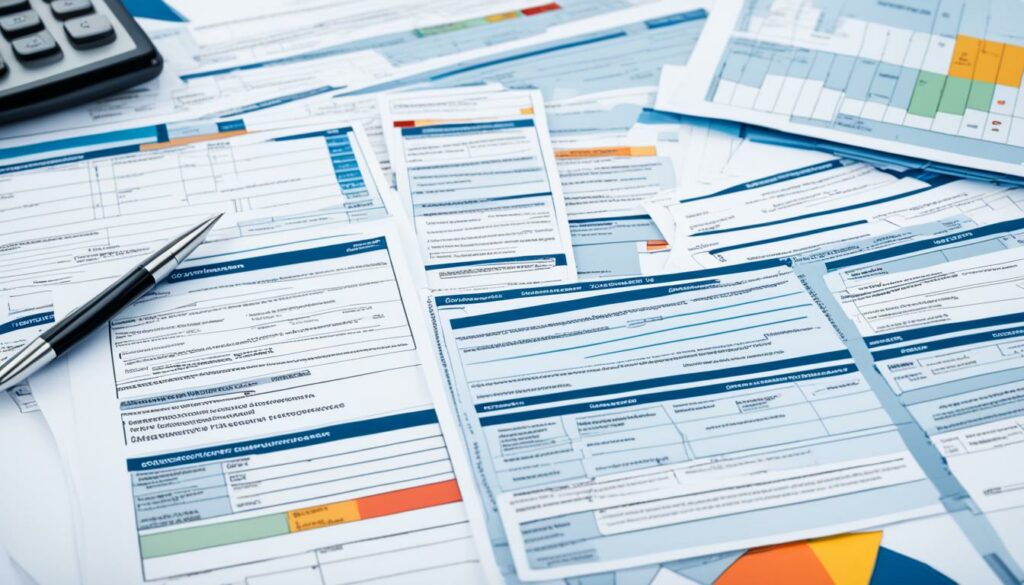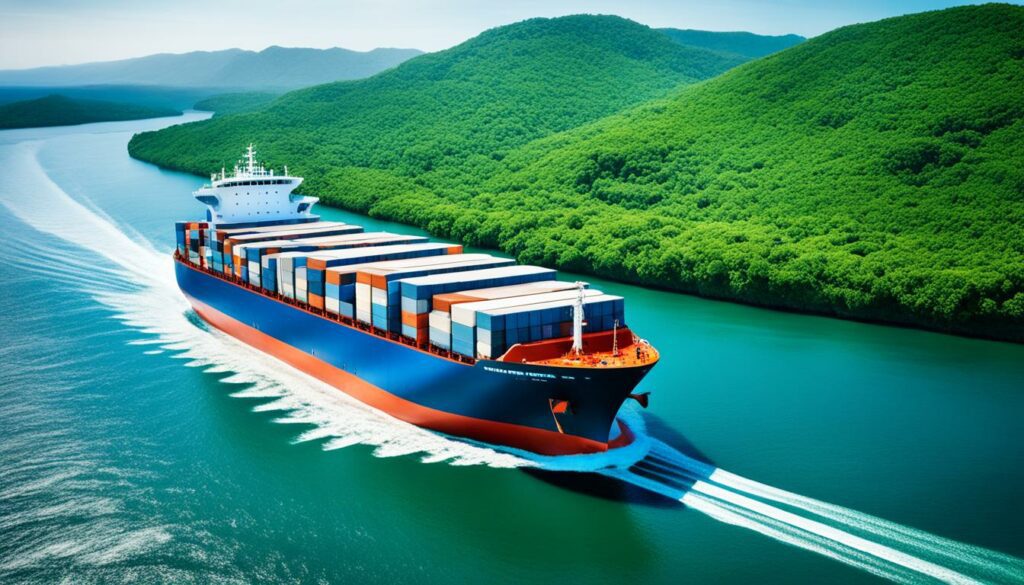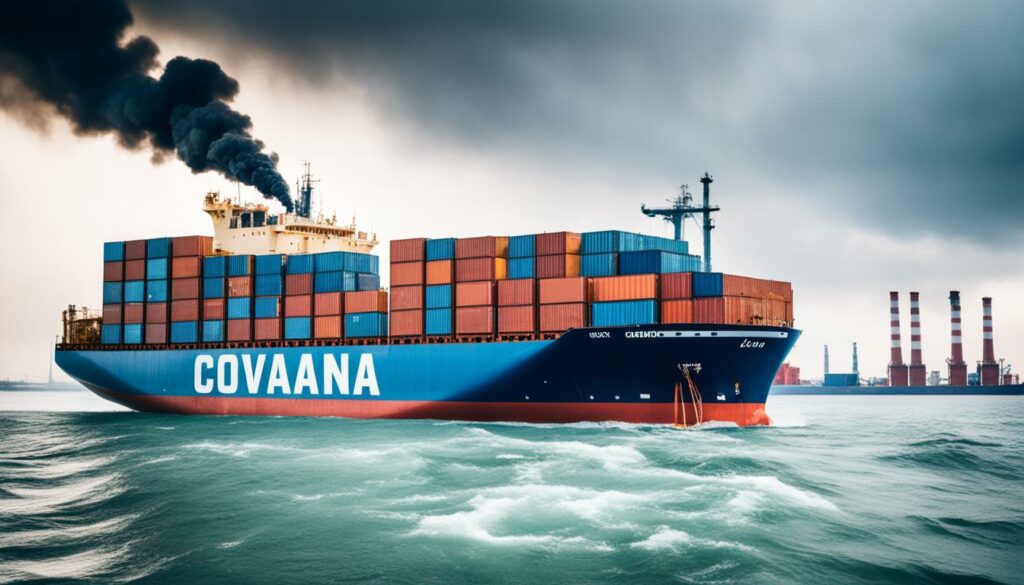Menu

The EMDG programme has greatly increased Australian exports, benefiting small to medium companies. Based on my deep experience, this guide emphasises sustainable export methods. It outlines key actions for following export laws and building a culture that supports sustainable growth.
For a successful EMCP, top management must be fully committed. They should tailor the programme to fit the company’s needs and the global market it serves. It’s crucial for international trade to not only meet rules but to also champion green solutions.
FTAs with other countries are vital for boosting trade and economic ties. Austrade works with the ATO to provide tax breaks for projects outside Australia, making our country more competitive. Austrade also fights bribery, highlighting the heavy fines and jail time in Australia.
It places a high value on honest and fair business deals, aiming to cut down on human rights violations, modern slavery, and corrupt practices, both at home and overseas. All organizations, in Australia or elsewhere, must follow the OECD Guidelines. These guidelines for ethical business are backed by the Australian Government. For more info, see Austrade’s detailed resources.
Today, leading the way in green export methods is key for any business. It helps with ethical buying and selling of products. Also, it cuts down on harm to our planet.
When we talk about green export ways, we mean using methods that meet global rules. For instance, businesses are now focusing on green supply chains. This helps them lower their impact on the environment.
They are also keen on using packages that don’t harm the Earth. They make sure to lessen waste and encourage reusing.
But, it’s not just about the goods. There are rules to follow to avoid the wrong use of certain items. Doing this right builds a company known for being green and ethical.
More people want products that are good for the Earth. This is pushing companies to find all-new green ways to sell abroad. To do this, they join hands with others in the buying and selling chain.
Finding better ways to move goods is also crucial. It helps lower pollution. Besides being good for the planet, it also boosts a company’s image.
For those keen on green trading, there’s a great guide to check out. It offers a detailed view on the subject.
An effective Export Management and Compliance Program (EMCP) is crucial for good export practices. Companies need to show they’re fully committed. They should thoroughly check risks and have strong security measures in place.
A solid EMCP begins with firm management commitment. It sets out clear rules, provides enough resources, and names people to take charge. This approach helps build a culture where following rules is vital. It also protects the nation’s security and the company’s name.
Spotting and dealing with risks in export work is a cornerstone of the EMCP. It’s key to look closely at what could go wrong. Companies should examine their products, customers, tech, how they work, and who they partner with. This helps tackle problems before they get too big.

Following compliance laws ‘from start to finish’ is vital. This rule means all exports must follow set rules tightly. This keeps our security tight and stops goods being used badly.
The EMCP is complex but needed for good export work. It includes important parts that focus on following rules and keeping the company safe.
| EMCP Components | Focus | Importance | |
|---|---|---|---|
| Management Commitment | Starting a culture of compliance and finding resources | Key for following all rules | |
| Risk Assessment | Finding and fixing risks in exporting | Crucial for stopping problems before they start | |
| Compliance Security and Screening | Making sure all exports meet EAR rules | Essential for national security | |
| Compliance Training | Teaching staff on how to comply with the rules | Makes sure everyone stays alert | |
| Recordkeeping | Keeping detailed export records | Very important for checks and audits | |
| Corrective Actions | Dealing with and fixing rule-breaking | Important for getting better all the time |
Getting into eco-friendly international trade means using the best green trade methods. These ways should fit the business’s size and type. They are based on sustainability and ethical trading.
They help keep the business going and help the planet. I’ll share tips for small companies. Also, I’ll show you stories of exporting that helped the environment.
For smaller companies, going green can really help. Here’s how:
“To trade for the future, we must do it in a way that doesn’t hurt our planet.”
Steps like these not only help the environment but also make your business more trusted and successful.
These case studies show how to export in an eco-friendly way. They follow the best green trade methods. Look at these success stories:
| Company | Strategy | Impact |
|---|---|---|
| Patagonia | Used renewable energy and supported fair trading | Cut down on a lot of pollution. Also, people loved their brand more. |
| Unilever | Started a big program to be more sustainable | Got better at making and moving things all over the world. They also became greener. |
| Toyota | Put money in green tech and renewable energy | Became better at making things. They also made less mess. |
| Interface | Started using old stuff to make new things | Threw away much less and made a new standard for the business. |
These businesses show how good green trading can be. It doesn’t just help the Earth. It also makes money and makes the world a better place for people to live.
It’s vital to have a carbon-neutral export programme to tackle global trade’s environmental harm. This strategy, part of the Export Management and Compliance Program (EMCP), goes beyond just following rules. It targets a big cut in the carbon emissions from exporting.
Google has set inspiring carbon-neutral goals that lead the way for businesses. By 2030, they want their worldwide operations to produce no net emissions. They plan to reduce half of all emissions from their activities since 2019 by then. This includes three kinds of emissions: those they directly produce, those from the energy they buy, and those from their supply chain.

To offset remaining emissions, Google is heavily investing in two types of solutions. They are putting money in projects in nature and in tech to balance out what they still emit. This approach has made them stand out as pioneers in eco-friendliness. Their move towards buying only carbon-free energy is a step that other businesses can take too.
The differences in how much carbon various countries emit show why we need to act fast. Countries like the USA, Australia, and Saudi Arabia have big roles to play. Learning from these patterns helps in creating strong plans to change global trading.
Google spends a good amount on clean energy contracts every year. However, this spending can change based on how much renewable energy is made and on economic trends. Their focus on new and smart ways shows that big businesses can lead in both following rules and cutting down on carbon.
It’s key to trade ethically in our global world. By following ethical trading principles and building trust in global commerce, we do more than just keep up good morals. We also make our brand stronger and keep investors happy. Doing this means spending a lot on money and making sure everyone in the company is on board.
The basics of fair trade and sticking to high ethical standards are at the heart of ethical overseas trade. Companies that export the right way look after their workers and the people they buy things from. They make sure everyone is working in safe places and being paid fairly. This approach helps avoid problems with the environment and with how society sees them.
Making sure you’re accountable in exporting means being clear and managing risks well. New tech, like blockchain, can make supply chains more open by keeping secure and permanent records. In 2016, business based on good environmental practice hit $1.7 trillion in trading. This number is set to grow. It shows just how much trust and accountability matter in business.
Taking the right steps in how we source things and work together in business is also crucial. Companies that care about the planet and ethics don’t just win over shoppers. They also create big chances for making money, valued at $10.6 trillion by 2030. Investing in being good for our world can make a business more liked and cut out risks linked to bad practices.
| Key Aspect | Details |
|---|---|
| Environmental Conservation | Minimising waste, reducing carbon emissions, adopting eco-friendly practices. |
| Fair Treatment | Ensuring fair wages and safe working conditions for workers and suppliers. |
| Supply Chain Transparency | Using blockchain technology for immutable transaction records. |
| Investment and Commitment | Significant financial resources and organisational commitment required. |
| Brand Reputation | Enhanced by embracing sustainability and ethics, attracting conscientious consumers. |
It’s crucial for firms to use green global trade ways if they stand for the planet. These procedures look at everything, from where items are made to how they are sent. It makes certain every part keeps the earth safe. With more people wanting green stuff, using sustainable supply chain ways has become a must.

Setting up a green supply chain needs careful thinking and hard work. The EU has made companies report on their green impact, pushing for greener trade. Big businesses around the world are making their suppliers meet green rules by 2025. This will affect most big companies. By doing this, businesses are forced to work in more earth-friendly ways.
| Country | Main Export | Impact of New Policies |
|---|---|---|
| Zimbabwe | Ferroalloys | High vulnerability due to high carbon-emissions intensity |
| Mozambique | Aluminum | 20% of exports affected; 97% of aluminum exports to the EU |
| Côte D’Ivoire, Ethiopia, Honduras | Cocoa, Coffee, Palm Oil | New deforestation-free regulations may hinder market access |
Putting money into eco-friendly shipping is key to cutting the harm trade does to our planet. Many groups are working to do this like the UN with its Sustainable Development Goals. Rules on climate change and the cost to obey them can hit trades in poorer nations hard. But using new green tech in shipping can help these places trade better in stricter green areas.
Working together in the chain of supply is so important for going green. By choosing green items and making shipping smarter, we do better. We aim to reach zero harmful emissions by 2050, in line with a world goal. This step shows our strong support for earth-friendly and fair trade for everyone.
Responsible exporters focus on ethical strategies that go beyond rule compliance. These strategies support sustainable trade worldwide. They also meet high environmental and social standards.
Choosing sustainable export practices can save money and improve operations. Governments and groups encourage these practices through different projects. They help businesses of all kinds to follow ethical strategies smoothly.
It’s vital to work with everyone involved in the supply chain for sustainable export practices to work. This includes suppliers, distributors, and more. This team effort ensures every step follows responsible exporting, boosting operational success.
Investing in green technologies can keep businesses competitive. For instance, in 2016, trade in green goods and services hit $1.7 trillion. Putting resources into this area helps companies meet growing eco-friendly product demand.
“The World Trade Organization (WTO) forecasts that by 2020, the trade in goods and services related to the environment could reach $2.2 trillion.”
Being clear about sustainability can win customer trust. Use online platforms and social media to show commitment to green practices. According to the Carbon Trust, this can lead to increased sales for over 62% of businesses, proving the power of honest marketing.
Responsible supply chain management involves cutting waste, ensuring fair labour, and sourcing sustainably. Today, more than 90% of big businesses report their sustainability actions. Showing these efforts openly builds a good company image and encourages better environmental practices.
| Statistic | Value |
|---|---|
| Global trade in environment-related goods (2016) | $1.7 trillion |
| Projected global trade in environment-related goods (2020) | $2.2 trillion |
| Businesses reporting higher sales from sustainability initiatives | 62% |
| Corporations reporting on sustainability performance | Over 90% |
| Potential economic prospects of sustainable trade by 2030 | $10.6 trillion |
Certifications like Fairtrade and GOTS give sustainable goods credibility. They show commitment to important values and set companies apart in the market. For exporters, investing in eco solutions is key to keeping up with ever-changing demands.
By choosing ethical export strategies, businesses do more than just sell goods. They play a part in global sustainability and secure their own future success. Making a sustainable commitment is crucial for the business world and for the planet.
Exporting sustainably faces big challenges, like dealing with rules and costs. I’ll talk about how to beat these rules and spend less.

There are many rules to follow in different countries. It’s very important to know these rules. Getting help from legal and compliance experts can navigate these rules better. They help ensure your exporting meets local and international laws. For instance, in the UK, following the Data Protection Act 1998 ensures protection of collected personal data for things like event sign-ups and content access. This approach can make dealing with rules easier.
Making exports sustainable sometimes costs more. But these costs can lead to long-term success. Using green tech and working with eco-conscious partners can cut these costs. For example, tracking with cookies can save money by using resources better. It’s key to find ways to be green that are also cost-effective.
Here’s a table with important info on dealing with cost issues in sustainable exporting:
| Aspect | Details |
|---|---|
| Company Establishment | 2002 |
| Offices | London and Singapore |
| Company Number | 4407327 |
| VAT Registration | 799 1585 59 |
| Data Protection | Data Protection Act 1998 |
| Data Collection | Event registration, content access, subscriptions |
| Cookies Usage | Login mechanisms, tracking traffic/user behaviour |
Facing these challenges head-on helps companies export sustainably. This way, they follow rules, save money, and do well financially.
Knowing about supply chain sustainability is key for any eco-friendly export effort. It involves using eco-friendly methods from start to finish. Companies that go green can cut down on harm to the earth.
The Carbon Trust found that 62% of businesses noticed higher sales. This shows being green can lead to more profits. It’s important for firms to use sustainable packaging, like things that can be recycled, to please green-minded customers.
| Sustainable Export Practices | Percentage Adoption |
|---|---|
| Recyclable Materials | 75% |
| Biodegradable Materials | 60% |
| Renewable Energy Technologies | 45% |
Working closely with suppliers and delivery companies is crucial for going green. This means planning the best routes to save fuel and cut pollution, a key green step. The WTO says trading green goods could be worth $2.2 trillion by 2020, pointing to big business ahead.
Keeping track of things like carbon emissions and waste is vital to see how well green efforts are working. A lot of big companies worldwide share details on how green they are, showing the value of honesty in being eco-friendly.
Going green in export isn’t just good for the planet; it’s what many consumers want. Companies leading in this area can run better and have a good name, which helps in the competitive global market.
Digital platforms play a key role in boosting sustainability in exports. Using new technology, we can cut down global greenhouse gas emissions. This could lower emissions by up to 15% by 2030. Surprisingly, these technologies make up just 1.4% of the global carbon footprint. This shows their importance in making global trade more eco-friendly.

Adopting e-commerce in sustainable trade gives companies the flexibility needed for eco-friendly trading. By 2025, there will be around 30 billion Internet-connected devices worldwide. This will make it easier to use digital tools in trading, allowing for instant tracking and smoother logistics. With a growing number of 5G users, from 1 billion now to an estimated 5 billion in 2028, exporters can improve their operations. This means better efficiency and a smaller carbon footprint.
The use of technological tools for green exports is vital for sustainability. Products like the Plan A platform help businesses monitor their green efforts. These tools assist in setting up decarbonisation strategies and sticking to global green rules. Since 2005, exports of digitally supplied services have been increasing rapidly, growing annually by 8.1%. Now, these services make up 54% of all service exports. Employing these digital tools can keep businesses at the forefront of sustainable trading.
It’s key for businesses to share their green efforts well. They should be open about their sustainability work and engage with the public. This builds trust. By doing this, they show they are truly working for the planet and society.
Telling the full story about a business’s green impacts and efforts is crucial. People trust more when companies are open. Using certifications like Fairtrade shows they mean what they say. Working with local green groups and updating people often can make a business look good.
Getting everyone involved is important for a united green push. Research shows this is vital. Knowing what customers and the public want helps a lot.
Businesses doing this are more likely to do well and be liked in their field. They should talk openly with everyone about their green plans. This builds a group of supportive fans, from customers to workers and investors.
Using tools like Plan A can make a big difference. They help manage carbon. Sharing this info with people shows a real dedication to the planet.
| Sustainability Insight | Impact/Importance |
|---|---|
| Demand for Ethical Products | Growing consumer base seeking eco-friendly goods. |
| Stakeholder Engagement | 88% of executives underline its importance in strategies. |
| Adopt Certifications | Increases trust in sustainable products. |
| Big Data Insights | Optimises export strategies through market research. |
Overall, keeping up with communicating well about green efforts is a big deal. Being honest, talking to others, and always trying to do better can give a business an edge. In these green-aware times, everyone’s looking for real environmental effort.
Governments and non-profit groups play key roles in making international trade more sustainable. They set up rules and policies to make sure trading is both good for the planet and safe. Examples include the EU-Japan Economic Partnership and the Comprehensive and Progressive Agreement for Trans-Pacific Partnership. These deals make being green a big part of their trade rules.
There’s a big push from people wanting goods to be made in a sustainable way, especially in food. To meet these demands, countries need to make their own trade rules match up with wider global standards, like those in the EU. Doing this helps avoid confusion and shows they’re not just putting up hidden barriers to trade.

Many want to see clearer standards for green trading. The European Commission, for example, is working on making trade deals better for the environment. They’re looking at measures like a tax on goods based on their carbon footprint. These efforts highlight a strong global drive for cleaner trading.
It’s important for countries to align their own standards with what’s agreed in trade deals. Usually, these big trade agreements follow a country’s own rules. You often see special green standards, called VSS, used in large countries like Brazil, China, and the United States. Surprisingly, some smaller, less wealthy nations, like Vietnam and Ethiopia, are doing a great job with green standards, too.
But, there are still obstacles to overcome. Things like the high cost of getting certified ‘green,’ lack of benefits, and sometimes political pushback can be big issues. Countries in Africa and Latin America show the most effort in using these green standards.
| Region | Leading Countries | VSS Adoption |
|---|---|---|
| Latin America | Brazil, Mexico | High |
| Africa | Kenya, Ethiopia | Moderate |
| Asia | India, Indonesia | High |
| Lower-middle Income | Vietnam, Indonesia | High |
| Low Income | Tanzania, Ethiopia | Fair |
To really make a difference, countries and non-profits must work together. They can make things better for green trading. This teamwork shows the powerful effect of public and non-profit efforts on making trade more sustainable.
Walking the path towards lasting export sustainability, monitoring and auditing play vital roles. The seventh element of an Export Management and Compliance Program (EMCP), highlighted on page 137, is key. It focuses on export compliance monitoring and evaluation for following regulations and improving trade methods.
Conducting audits on sustainable practices helps businesses review and boost their commitment to environmental, social, and economic norms. By using a sustainability audit checklist, companies can monitor advancement, set real goals, and make sure they meet global standards. This checklist is a guide for finding where to make things better, driving continuous progress in sustainable activities.
The use of digital platforms, like SafetyCulture, is changing how audits happen. These tools improve processes, cut down on manual work, and allow for teamwork in real time. They help with both distant and in-person audits by making detailed reports easier and supporting the ongoing betterment of practices. As a result, these technologies increase an entity’s trustworthiness and strengthen commitments to global sustainability.
To wrap up, keeping a check on export compliance and auditing sustainable actions are crucial for firms wanting to stay strong and green in the long run. Aligning sustainability audit checklists with world standards helps with uniformity and trust, backing wider efforts for a greener and more socially responsible planet.
Sustainable export practices are methods for fair and green trading. They meet rules and care for the earth. For instance, steps are taken to make sure items are not used in the wrong way. Each industry’s special needs are also looked after.
Sustainability matters for not using up our planet’s resources too fast. It’s about trading in ways that cause less harm to nature. By choosing green ways, companies can be more popular and meet the demand for eco products.
An EMCP works best with bosses committed to it. It involves checking risks and making sure everything is export-ready. From start to finish, there are checks to stop any issues.
Small businesses can do eco-friendly exporting by using less packaging and better materials. They should ship smarter and use greener vehicles. It’s vital they follow green laws and have a strong export plan.
Patagonia sells clothes made with care for the planet. Unilever is also known for green and fair trade. They make sure their goods follow tough eco rules.
It’s about balancing the harm trade can do to the environment. This can be done by using green power and smarter shipping. What can’t be avoided, like emissions, is offset by buying credits.
Good trading means being open, fair, and caring for workers and the environment. It’s about not hurting people, defending their rights, and running a business that’s good for the planet.
To be trusted, businesses need to be clear and fair in all they do. They should make sure their whole process can be checked. Also, following good trading rules and laws is key.
It starts by picking eco and fair suppliers. Waste and energy should be lessened. Doing good at every stage, from making to selling, is important. Regular checks can keep things on the right track.
Shipping green means using eco packaging and sending items together as much as possible. Pick vehicles that pollute less and work with companies that care about the earth. This all cuts down on damage to the planet.
Expensive rules and green technology trouble some exporters. To beat these, it’s important to know the rules and get advice. Investing in lasting green tech can save money in the long run.
Running a green supply chain makes companies look better. It keeps them legal, helps the environment, and runs in a better way. Also, buyers today want things made the right way, bringing in more sales.
Digital helps by figuring out how much harm trade does and finding ways to do better. It makes shipping smarter and sharing eco plans easy. Platforms like Plan A give lots of details on how to pollute less.
Governments set up rules and help with green programs. They make sure businesses know how to do good trade. Agencies like the U.S. BIS offer help to keep exports from harming the planet.
Checking often is crucial to keep doing good trade. It finds what can be made better and keeps up with new green ways. This shows a real commitment to doing business the right way.